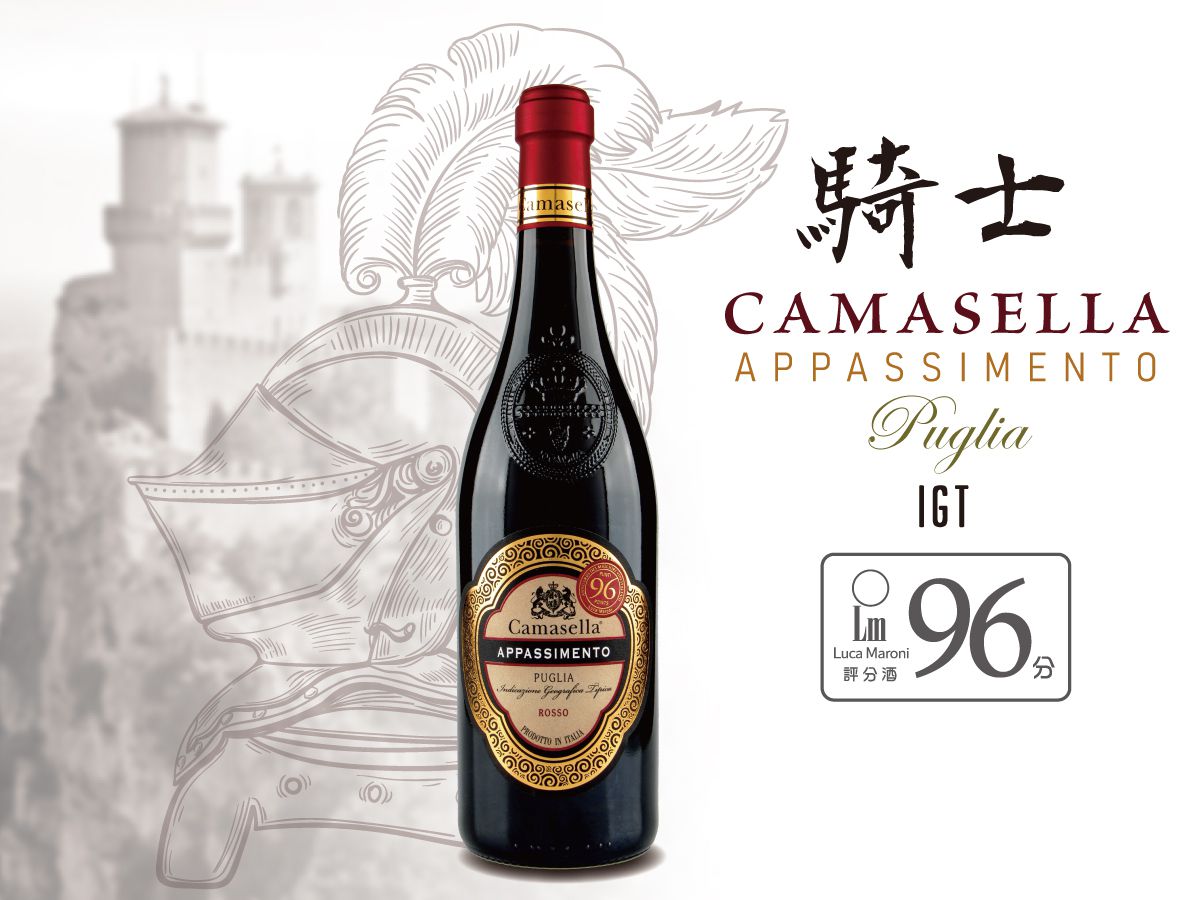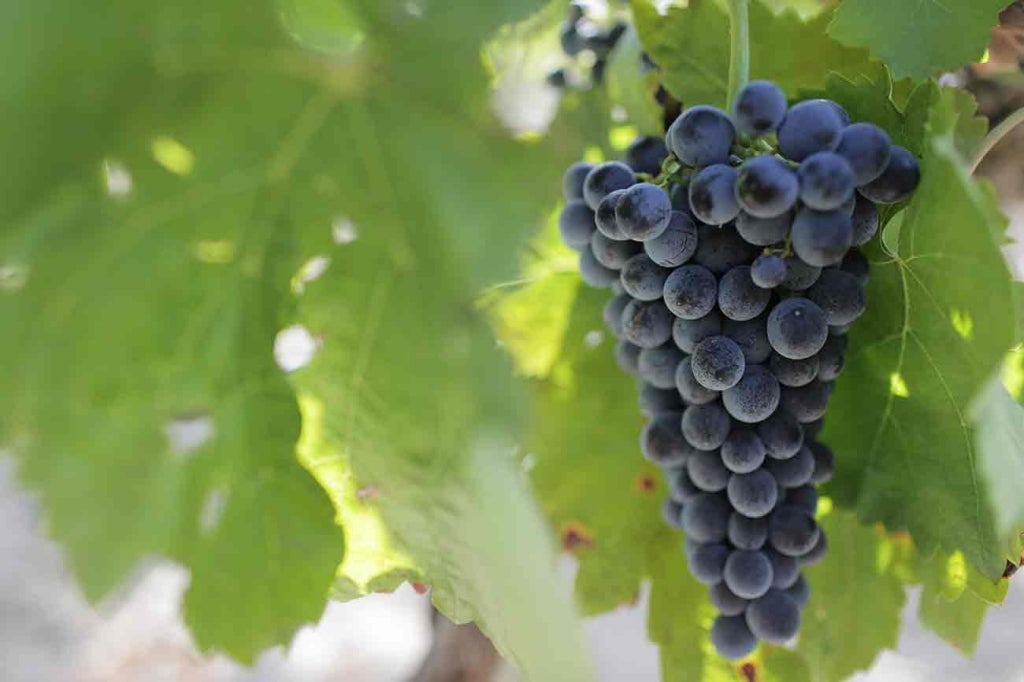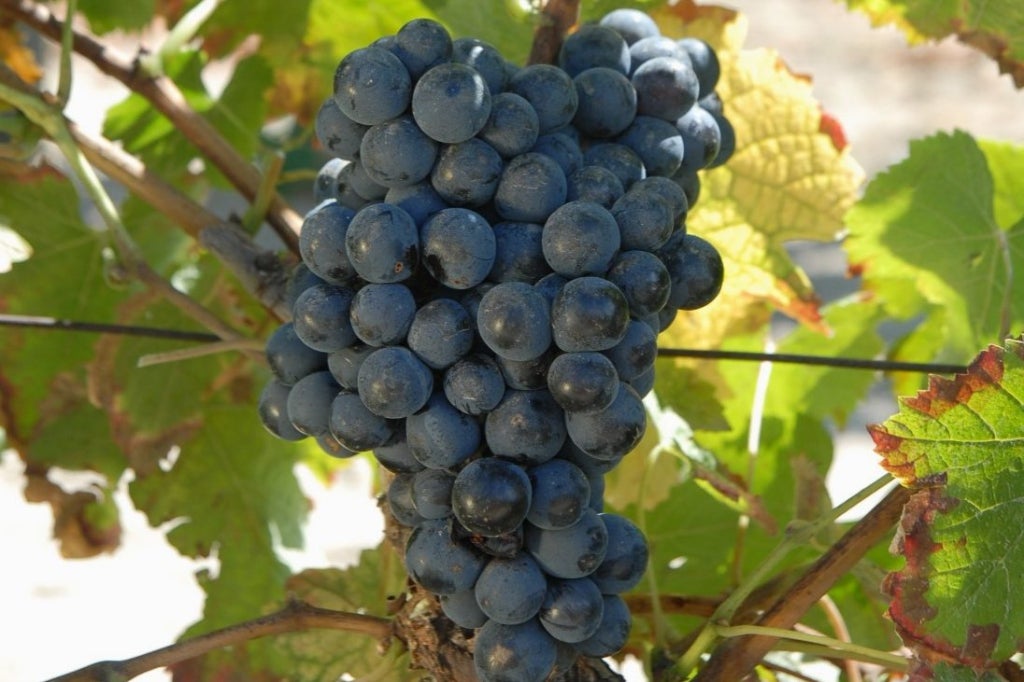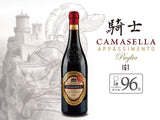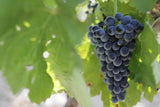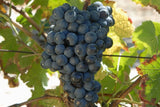Cantine Santi Nobile CAMASELLA Appassimento Puglia IGT
| Regions: Italy-Puglia | Ratings: IGT, LM 96/99 |
| ABV: 15% | Decanting Time: 15-30 minutes |
| Winery: Cantine Santi Nobile | Grapes: Merlot/ Nero D’Avola |
| Food Pairing: It is suitable with meat, sukiyaki, and mature cheese, especially with braised lamb. | |
The winery uses the 3,000-year-old winemaking process, Appassimento, to make this red wine. The dead vine method requires the grapes to be left to dry naturally on bamboo mats for an extended period before pressing. This process is not only time-consuming and labor-intensive but also carries a particular risk. If dampness or rot occurs during the drying period, the grapes will not be able to be used for winemaking.
Drying grapes causes the fruit to lose water and concentrate more sugar. Although only half the juice concentrate of fresh grapes can be squeezed, this also results in wines that are more alcoholic, darker in color, fuller in tannins, more fruity, and more balanced in structure.

Cantine Santi Nobile
Cantine Santi Nobile is a noble winery located on the island of Sicily in southern Italy. It has a thousand-year-old winemaking culture and unique grape planting and collection techniques to produce excellent products. Sicily has a high climate throughout the year, and the soil made of limestone and gravel is the best condition for growing grapes. The Noble Holy Land Winery produces both internal and external products, and the bottle design also retains the cultural color of the Baroque time, making wine tasting and painting appreciation at the same time. The noble sanctuary Barocco has become the masterpiece of this estate. The transplanted changes have made its grapes have more prominent and attractive aromas, wild plums, and sweet chocolate flavors. This wine was awarded the LUCA MARONI ) 96 points.
The winery uses a unique winemaking process with a history of more than 3,000 years - Appassimento (Appassimento) to make this Camasella Appassimento Puglia IGT (LM96) red wine. The dead vine method requires the grapes to be left to dry naturally on bamboo mats for a long period of time before pressing. This process is not only time-consuming and labor-intensive but also has certain risks. If the grapes are damp or rotted during the air-drying period, the grapes will not be able to be used for winemaking. Drying grapes causes the fruit to lose water and concentrate more sugar. When the grapes are pressed, you get only half the juice concentrate from the fresh grapes, but this also results in wines that are more alcoholic, darker in color, fuller in tannins, more fruity, and more balanced in structure. The most important wine critic in Italy, Luca Maroni (LM), gave this wine 96 points, and the highest he gave was only 99 points.
This aristocratic winery located on the island of Sicily in southern Italy has a thousand-year-old winemaking culture and unique grape planting and collection techniques to produce excellent products. The Noble Holy Land Winery produces both internal and external products, and the bottle design also retains the cultural color of the Baroque time, making it possible to appreciate the paintings while tasting the wine.
This wine has an enticing aroma of jam and guacamole, smooth and sweet on the palate, with a light black pepper finish at the end. It is a very structured wine. It goes well with meat and mature cheese, especially with braised lamb.
Merlot
Merlot is a dark blue–colored wine grape variety, that is used as both a blending grape and for varietal wines. The name Merlot is thought to be a diminutive of merle, the French name for the blackbird, probably a reference to the color of the grape. Its softness and "fleshiness", combined with its earlier ripening, make Merlot a popular grape for blending with the sterner, later-ripening Cabernet Sauvignon, which tends to be higher in tannin.
Nero D’Avola
Nero d'Avola is "the most important red wine grape in Sicily" and is one of Italy's most important indigenous varieties. It is named after Avola in the far south of Sicily, and its wines are compared to New World Shirazes, with sweet tannins and plum or peppery flavors. It also contributes to Marsala Rubino blends.



Puglia
The Puglia region, located in the east of Italy, has a very long winemaking history and a unique local grape variety. Puglia is the second-largest wine producer in Italy, after Veneto. Puglia has always been considered one of Italy's most important wine regions.
Puglia has a Mediterranean climate, the soil is rich in calcium, and the topsoil is rich in iron, which is very suitable for grape growing. With year-round sunshine and a dry climate, Puglia is the place to be if you're looking for a red wine with ripe fruit and rich aromas.
Most Puglia red wines are ripe, full-bodied, and pair well with spiced meats. Puglia's wine producers all have one thing in common; they focus on producing indigenous grape varieties, such as Negroamaro, Primitivo, and Bombino Nero.

Luca Maroni Scoring System - There is no 99-point rating system for perfect wines
Rational analysis and evaluation of wine with consistency, balance and integrity that can be analyzed by scientific instruments, coupled with factors such as price and production, are loved by Italian wine fans and build trust.
Payme, FPS, Alipay, and WeChat Pay are also available.
(including Hong Kong, Kowloon, New Territories urban areas, and Discovery Bay are free, other remote areas are negotiable)
9am - 1pm
1pm - 6pm
6pm - 10pm
For mainland orders, please place an order first, then we will arrange another quotation for the goods and transportation.





